
This year will be remembered for many things, but for anyone in the market for a dedicated activity-tracking device, 2013 welcomed more than a few fresh contraptions to the market.
Indeed, with so many players now vying for a piece of the fitness-tracking pie, it can be difficult to keep up with who’s doing what and which one deserves your hard-earned dollars, euros or pounds. So we took a quick look at the current state-of-play to see what’s what and where your money should be directed.
Nike+ FuelBand SE
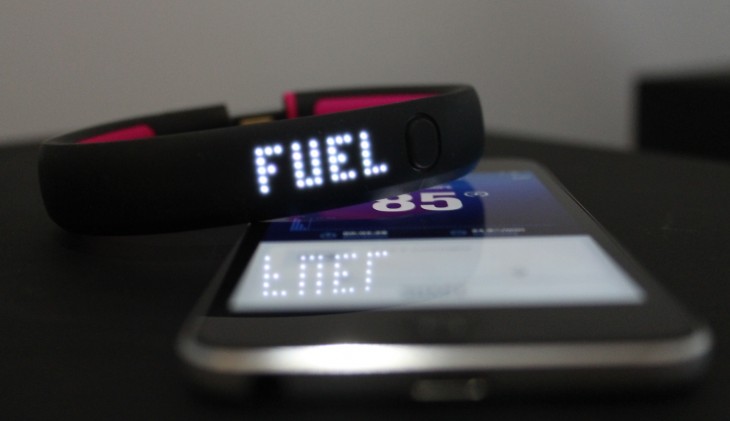
Nike launched its first FuelBand way back in early 2012, serving up a wristband that tracks and measures every movement you make.
Simultaneously, Nike also introduced the world to a whole new proprietary activity metric called NikeFuel which, used in conjunction with the FuelBand, measures everything you do in a day to establish how active you are.
Last week, Nike rolled out the much-anticipated follow-up tracker – the FuelBand SE. Though it essentially has the same ‘look and feel’ as the original incarnation, Nike’s new wristband pulls in a number of fresh features including Bluetooth 4.0, which means it automatically syncs up with your iPhone – no need to long-press the button to beam your data across.
The Nike+ FuelBand SE is a beautiful piece of kit, and it’s now more feature-rich than ever with its recent refresh. ‘Win the Hour’ encourages you to get out your seat and move for five minutes every hour, while the other major update comes in the form of ‘Sessions’, which split your day’s activities into segments. You can tell it what you’re doing at various junctures – this includes baking, running, juggling…you name it.
The lack of a distance metric on the band itself is a glaring omission. Granted, the FuelBand isn’t designed as a distance-tracker like the Nike+ Running app, but given that steps are converted to mileage within the FuelBand app itself, it surely wouldn’t be too far-fetched to include an extra option on the band for those who like to see roughly how far they’ve walked.
Also, there is still no Android app, which is a major bummer.
What? Nike+ FuelBand SE
How much? $149/€139/£129
Tracks? Nike Fuel, steps, calories, Hours Won, distance (app only)
Screen? Yes
Wearing style: Wrist
Syncs via: iOS, PC/Mac
Colors: Black, Volt, Pink Foil, Total Crimson
Pros: Attractive, solid, Nike ecosystem
Cons: Pricey, no Android app, only compatible with iPhone 4S and above, no distance metric on the band
Withings Pulse
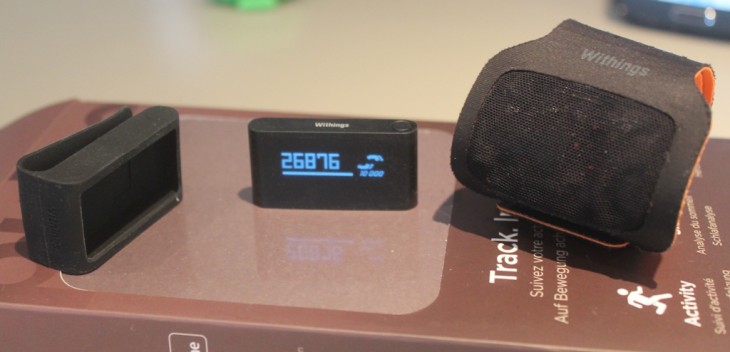
One of the most recent entrants to the activity-tracker space is Withings, the France-based company that’s been shipping connected devices since 2009. With the likes of WiFi scales and blood pressure devices already in its arsenal, the Withing Pulse made its debut in the summer.
The Withings Pulse works exactly like an old-school pedometer, insofar as you clip it close to your body (e.g. your belt) to monitor your movements. Out of the box, there’s three main components – the Pulse itself, a rubber clip to slip the Pulse into, and a soft wristband so the Pulse can monitor your sleeping patterns.
Having a separate clip that isn’t part of the Pulse is a good move, as it gives a little more flexibility in terms of how you wear it and leaves things open to future iterations, including further accessories.
The main differentiator for the Pulse is the built-in heart-rate monitor on the rear of the device. Given that most other trackers require another accessory to track this metric, it’s great that this has been baked directly into the Pulse, and for many, will swing the ‘which tracker should I buy’ decision massively in its favor.
Also, Withings lets you strap the Pulse to your wrist to monitor your sleep. When you’re ready to hit the land of nod, press the little moon icon on the screen, and in the morning you’ll need to remember to deactivate it. Though the FuelBand can technically track how long you’ve slept if you tag an ‘activity’ as ‘sleep’, the Pulse promises to analyze the quality of your sleep through tracking your actual movements during the night.
Another brownie point for the Pulse is that it recognizes when you’re running and automatically displays a real-time recap of distance and duration. A nice touch for sure.
What? Withings Pulse
How much? $99/€99/£89.95
Screen? Yes (touch)
Tracks? Steps, elevation, distance, sleep, heart-rate, distance, calories
Wearing style: Belt or pocket, wrist (sleeping only)
Syncs via? iOS, Android
Colors: Black
Pros: Heart-rate monitor, small & light, sleep-tracking, affordable, Android compatible, touchscreen
Cons: No syncing via PC/Mac
Jawbone UP
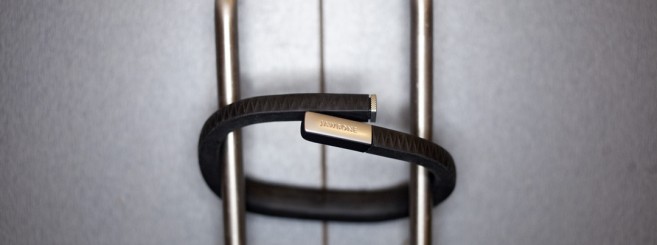
Jawbone was already well-known for its audio technology, but two years ago it entered the activity-tracking fray with the launch of the Jawbone UP, one of the first such devices to hit the market.
The UP is a wearable wristband that combines tracking, analysis, social and motivational elements (like letting you see your friends’ activities!). It tracks all your movements, how well you sleep and how you feel after you eat. Based on this information, Jawbone provides personalized recommendations and challenges to (hopefully) help you live a healthier life.
Unlike the Withings Pulse and Nike’s FuelBand, however, the UP doesn’t have a screen on the device itself – you must sync it up with your iOS or Android device and view your data there. Rather disappointingly, Jawbone’s wristband doesn’t support Bluetooth either – you must physically plug it into your smartphone through the 3.5mm headphone jack.
The Jawbone UP comes in at roughly $20 cheaper than the FuelBand, but this may not be enough for those concerned about the syncing and lack-of-screen. That said, the UP does actually cater for a much broader range of activity measurements, including a good sleep-tracking feature that covers all facets of your time in bed, including hours slept, time to fall asleep, phases of sleep (deep versus light) and overall quality.
Similarly, you can set smart sleep alarms to help you wake up more refreshed, while so-called “Idle Alerts” remind you to move during the day, much like Nike’s ‘Win the Hour’.
Through the accompanying app, Jawbone also encourages you to record your meals in a photo journal, letting you track where you’re eating, when you’ve eaten, and even how you feel after you’ve had time to digest your meal – this makes it easier to establish how different foods affect your mind and body. You can also scan barcodes from packaging, manually search its food database, or create your own items and enter how much fat, calories, and more was involved.
What? Jawbone UP
How much? $129.99/€129.99/£99
Screen? No
Tracks? Steps, calories, distance, sleep, pace, active vs. inactive times
Wearing style: Wrist
Syncs via? iOS, Android (4.0)
Colors: Onyx, mint green, blue, light grey, navy blue, red, orange, hunter green
Pros: Sleep-tracking, Android compatible, holistic
Cons: No screen, no Bluetooth, pricey in euros/US dollars (compared to other trackers)
Fitbit Flex/Force
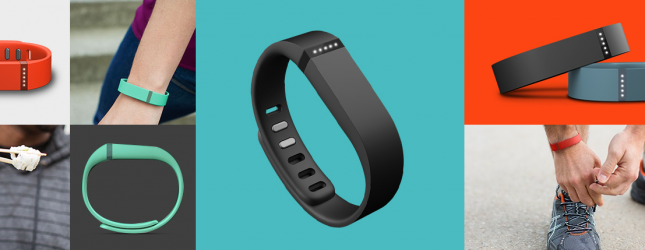
Fitbit is one of the most well-known names in the fitness-tracking space, and for good reason. Founded out of San Francisco in 2007, Fitbit has not just one but FOUR activity-trackers to its name. But for the sake of brevity we’ll not delve into the Fitbit Zip or Fitbit One, instead we’ll focus on the Fitbit Flex and recently launched Fitbit Force (US only for now).
The Flex was announced to the world earlier this year, tracking steps taken, distance, calories burned and sleep, with LED dots providing feedback on your progress. There is no screen as such though, leaving you to sync up with your iOS or Android device to garner any real data.
The Fitbit Force, however, which is on sale now in the US, is basically a refinement of the Flex as it introduces a more advanced OLED display. This provides real-time information on the steps you’ve taken, distance covered and calories burned, as well as active minutes and the number of floors climbed.
The Fitbit Force also monitors the quality of your sleep and can wake you up with a ‘silent alarm’ that relies on vibration, rather than audio. Both Fitbit trackers can record your sleep in ‘sensitive’ mode for detailed sleep reporting or ‘normal’ mode for a more general gist of your sleeping patterns.
Both the Flex and the Force capture a decent amount of data and, if you’re willing to include details around your food and liquid intake each day, you can gain significant insights into your lifestyle over time.
As for the Force specifically, well, it even offers notifications for incoming calls, which really begins to blur the lines between smartwatches and activity-trackers. And given the $20 lower price of the Force compared to the FuelBand, this should see Fitbit’s new band become a ‘force’ to be reckoned with.
What? Fitbit Flex/Force
How much? $99.95 ($129.95 Fitbit Force, US-only)/€99.95/£79.99
Screen? No (Flex)/Yes (Force)
Tracks? Steps, distance, calories, active minutes, sleep, floors climbed (Force only)
Wearing style: Wrist
Syncs via? iOS, Android, PC/Mac
Colors: Slate, black, pink (Flex only)
Pros: Sleep-tracking, Android compatible, attractive, floors climbed feature (Force only), affordable
Cons: Fitbit Force is US-only for now, no proper screen (Flex)
Fitbug Orb
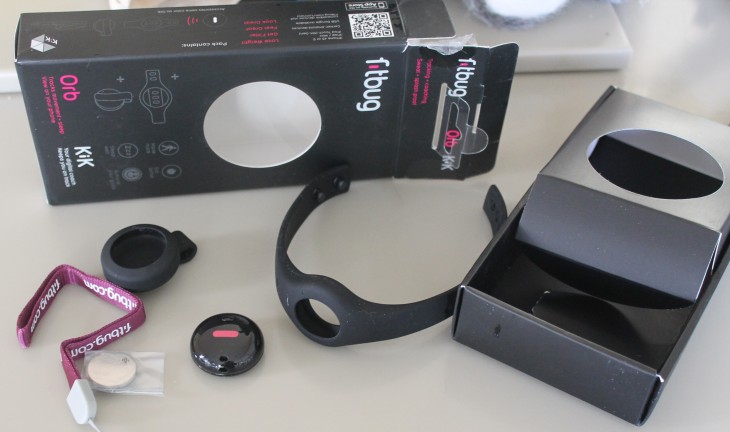
The Fitbug Orb is a slightly different beast to the other activity-trackers outlined here. At $50, it manages to shave at least half the retail price off the Withings Pulse, and two-thirds off Nike’s incarnation. But at that price, it surely must be cutting corners, right? Well, yes and no.
As we wrote in our recent review, the Orb is a very versatile device, insofar as it gives you a choice of wearing options – out of the box you get a watch-style wrist-strap, belt clip, and another wrist-strap which looks like it’s designed to be worn loosely around your, well, wrist.
Also, the Orb doesn’t have a rechargeable battery built-in – you must open the back with a coin and replace the CR2032 button cell lithium battery every six months or so.
Unlike the Withings Pulse or Nike+ Fuelband, the Orb has no screen to speak of – it has a single light and one button. Any information you need from your tracked activities must be garnered from the accompanying apps through which you sync the unit, much like the Jawbone UP.
The Orb tracks steps, distance, sleep and calories burned, and then sends this information wirelessly to your Fitbug account.
Now, there are two ways to sync the Orb to your account. You can beam the data via Bluetooth to the iOS app, or you also send it directly to your PC or Mac via the Fitbug Bluetooth dongle, which is available separately for $14.99. It’s worth noting here that there is actually an Android app too, one that promises to be compatible with the Samsung Galaxy S4, Samsung Galaxy S4 mini, Samsung Galaxy Tab 8.0 and the Samsung Galaxy Note 8.0. However, despite numerous efforts, we simply could not get the Orb to work properly with the Galaxy S4.
Overall, the Orb brings an interesting proposition to the activity-tracking table, but it ultimately didn’t feel ‘smooth’ enough compared to its more-expensive counterparts. And, if truth be told, the syncing in general seemed a little buggy across the board.
What? Fitbug Orb
How much? $49.95/€NA/£45
Screen? No
Tracks? Steps, distance, sleep and calories burned
Wearing style: Wrist, belt, body, pocket
Syncs via? iOS, PC/Mac (additional dongle required), Android (limited)
Colors: White, pink, black
Pros: Affordable, versatile
Cons: No screen, buggy
Bowflex Boost
The Bowflex brand may be more synonymous with exercise machines than dainty activity-trackers for your wrist, but with the recent launch of the Bowflex Boost, that could change.
Much like the Fitbug Orb, the Boost is being pegged at the lower-end of the affordability range. Indeed, the $50 device is essentially a black, featureless wristband that sports a small button that lights up when pressed – green indicates any goals you’ve achieved, red represents the dawn of a new day. These goals can be set via the iPhone app only (yup, no Android support as of yet), and the wristband tracks steps, calories-burned and distance. As with the Withings Pulse and the Jawbone UP, the Bowflex Boost also tracks your sleep, including the quality, based on your movements.
What? Bowflex Boost
How much? $49.95 (US-only)
Screen? No
Tracks? Steps, distance, sleep and calories burned
Wearing style: Wrist
Syncs via? iOS
Colors: Black
Pros: Affordable, sleep-tracking
Cons: No screen, no Android support, basic
Misfit Shine
The Misfit Shine is another recent entrant to the increasingly-busy fitness-tracking space, but this contraption does at least attempt to bring something different to the table from a stylistic perspective.
Though the Shine has no screen as such, there are 12 little lights that shine progressively the closer you move towards any preset goals. These same lights also combine to tell you the time of day.
The all-metal unit just feels great, and it’s evident where the extra money has gone compared to, say, the Fitbug Orb. Indeed, on the surface each of these devices are similar in size, shape and versatility, but ultimately the Shine oozes way more quality.
 At this juncture, it’s probably worth mentioning that the Shine is Misfit Wearables’ inaugural product, and the company counts former Apple CEO John Sculley as a co-founder. Indeed, it’s currently compatible with iOS only, however an Android app is in the works.
At this juncture, it’s probably worth mentioning that the Shine is Misfit Wearables’ inaugural product, and the company counts former Apple CEO John Sculley as a co-founder. Indeed, it’s currently compatible with iOS only, however an Android app is in the works.
Similar to the Fitbug Orb, the Shine can slot into a wristband, magnetic clip or a neck-band that lets you wear it similar to a necklace. It’s also worth adding that the Shine is completely waterproof, meaning you can go swimming with this baby.
For activity, the app shows step count, distance traversed, and calories burned. It also tracks sleep, however it only monitors total hours slept, which will be fine for most people. Did we mention the app is lovely? No? Well, it is.
What? Misfit Shine
How much? $119.95/£100
Screen? No
Tracks? Steps, distance, sleep and calories burned
Wearing style: Wrist, belt, pocket, clothing
Syncs via? iOS
Colors: Grey, Topaz, Champagne, Jet (black)
Pros: Completely waterproof, simple & elegant, nice mobile app
Cons: No screen, no Android support
Which should you buy?
There are many other great apps and gadgets that track multiple facets of your every move.
For example, if you’re looking to simply harness your existing smartphone technology then there’s Moves for starters, which is a great activity-tracking app for iOS and Android. Nike too recently launched the iPhone 5s-specific move app, which does something similar. There’s a slew of splendid GPS watches too, including the Soleus FIT 1.0 which is a decent entry-level GPS timepiece, or the Garmin Forerunner 610 (touchscreen) at the higher-end.
If your heart is set on an activity-tracker, however, the ultimate winner from the list above will vary (sorry, boring answer), given that it’s subjective and depends not only on your personal needs, but also your budget.
While Nike’s FuelBand has become a more appealing proposition with the latest update, its price-tag will likely scare many people away – plus, it’s available for iPhones only. Withings’ entry to the market with the Pulse is a welcome one indeed, and offers an affordable, Android-optimized, versatile device that not only delves into your sleeping habits, but has a built-in heart-rate monitor too. This is a massive win, and one that other devices will likely ape moving forward.
The Fitbit Force, though it’s US-only for now, also offers a compelling proposition that builds on the success of its previous devices, while the Misfit Shine is a gorgeous device too that sets itself apart from the competition with a pretty unique design.
We can’t wait to check out the Indiegogo-funded Amiigo too, which should be shipping later this year – we’ll bring you a review as soon as we can get our hands on a unit. Meanwhile, check out the official promo video below.
Related Reads
- Born to run: A guide to some of the best GPS fitness-tracking apps
- Planning a marathon or triathlon? Here’s our technology guide for endurance-sport noobs
Feature Image Credit – Shutterstock
Get the TNW newsletter
Get the most important tech news in your inbox each week.





